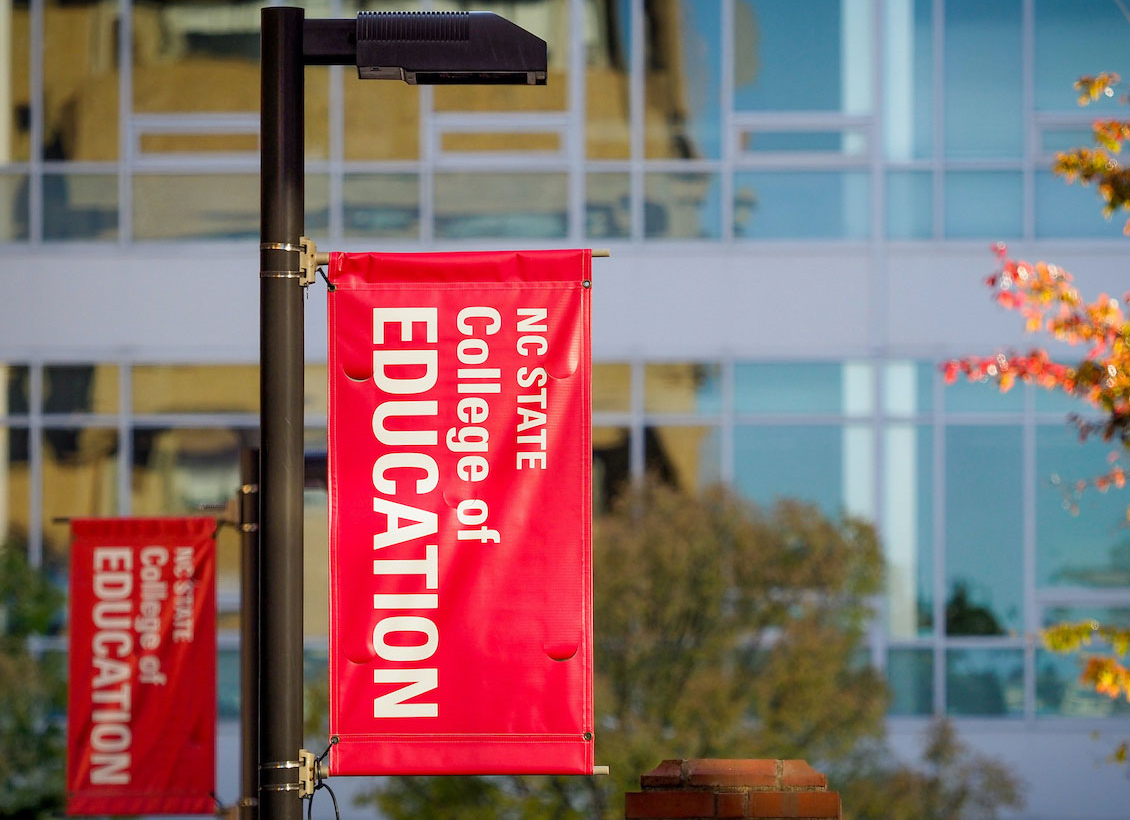The NC State Special Education add-on licensure program is intended for students enrolled in the undergraduate Elementary Education degree who want to add Special Education licensure to their initial teaching license. The add-on licensure program reflects contemporary issues in today’s classrooms, schools, and society concerning
students with diverse learning needs.
Candidates in this optional add-on program will expand their general knowledge and specific skills to teach students with high-incidence disabilities (such as specific learning disabilities, ADHD, mild intellectual or behavioral disabilities, or autism) who are educated in inclusive general education classrooms with supportive resource assistance. Candidates will receive preparation in the characteristics of students with disabilities, principles of Universally Designed core instruction, and instructional strategies and behavior management techniques for teaching students with disabilities
in elementary and secondary schools.
The program includes an emphasis on data-based decision-making using informal and formal assessments, the development of informal diagnostic techniques, and procedures for adapting curriculum and instruction.
Coursework
The coursework consists of a sequence of five graduate-level courses that
begins in the Spring semester of the Sophomore year and continues
through the Senior year. These courses are graduate-level courses that are
also taken by students in NC State’s Master’s degree programs in Special
Education. Courses in the add-on program are offered via online or hybrid
formats. The following courses are taken in addition to the Elementary
Education major course of study:
| Course | Semester Offered | Year |
| ECI 585 – Education of Exceptional Children (3 hrs) | Spring semester* | Sophomore year |
| ECI 584 – Intervention for Behavior Problems of Students with Disabilities (3 hrs) | Fall semester* | Junior year |
| ECI 571 – Instructional Strategies for Students with Disabilities (3 hrs) | Spring semester* | Junior year |
| ECI 581 – Educational Diagnosis and Prescription For Children With Exceptionalities (3 hrs) | Fall semester* | Senior year |
| ECI 509 – Special Topics in Curriculum and Instruction (Special Education Field Experience) (1 hr) | Spring semester | Senior year |
Course Descriptions
ECI 585: EDUCATION OF EXCEPTIONAL CHILDREN
Introduction to field of special education. Focus on historical overview, definitions and terminology in basic areas of exceptionality; etiological factors in exceptionality; developmental and learning characteristics of each area of exceptionality; and educational settings and strategies
employed in special education including Multi-Tiered Systems of Support and Positive Behavior Intervention and Support. Review of current educational laws and policies affecting special education.
ECI 584: INTERVENTION FOR BEHAVIOR PROBLEMS OF STUDENTS WITH DISABILITIES
Curriculum materials, instructional strategies and behavior management techniques related to
teaching children and youth with behavioral disorders including individualized instruction, group
process, organization and evaluation of classroom programs, parent involvement, community
resources and teachers’ personal and professional growth and development.
ECI 571: INSTRUCTIONAL STRATEGIES FOR STUDENTS WITH DISABILITIES
Methods and materials for teaching students with disabilities in elementary and secondary school. Focus on research-supported instructional strategies for teaching academic skills, Universal Design for Learning, implementation of appropriate academic interventions, and evaluation of instructional outcomes within the context of Response to Intervention and Multi-Tier Systems of Supports.
ECI 581: EDUCATIONAL DIAGNOSIS AND PRESCRIPTION FOR CHILDREN WITH EXCEPTIONALITIES
Concept of educational diagnosis of students with exceptionalities, including examination of educational diagnostic procedures in current use in special education. Development of informal diagnostic techniques and procedures for adapting curriculum and instruction for learner with exceptionalities.
ECI 509: SPECIAL TOPICS IN CURRICULUM AND INSTRUCTION (SPECIAL EDUCATION FIELD EXPERIENCE)
In-depth study of topical problems in curriculum and instruction selected from areas of current concerto practitioners in education
Field Experience
Students in the add-on program will have an enhanced student teaching experience in the spring semester of their senior year. In addition to their full-time student teaching experience in an elementary general education classroom, students in the add-on program finish the spring semester with a field experience in a special education setting. Students will observe, assist, and teach alongside a special educator in a resource or inclusive classroom.
Note: Successful candidates will emerge with two NC teaching licenses: Elementary Education (K-6) and Special Education: General Curriculum (K-12). North Carolina Special Education licensure is K-12; therefore, special education content and, potentially, field experiences will extend beyond the elementary grades.

